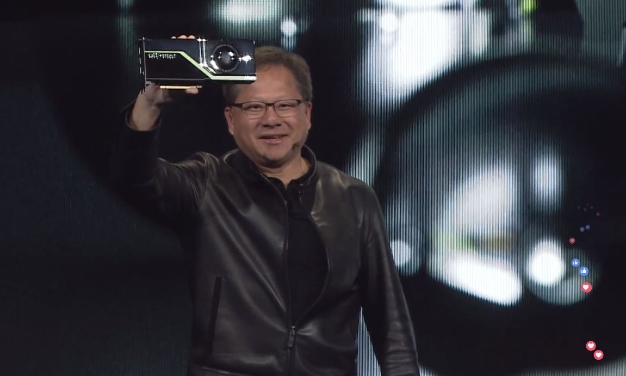NVIDIA Turing Debuts With Quadro RTX: 16 TFLOP Real-Time Ray Tracing Beasts For Graphics Pros
Turing GPU architecture replaces Pascal, which has served both the consumer and professional markets since 2016. But as its 8th generation GPU architecture, NVIDIA is ushering in a number of advances with Turing; in fact, it's being billed as the world's first ray-tracing GPU. When it comes to content creators, NVIDIA claims that with the power of Turing, "applications can simulate the physical world at 6x the speed of the previous Pascal generation."

Turing’s ray-tracing engine is powered by what are called RT Cores. These cores are used to accelerate computational operations to determine how light and sound interact with their environment in a 3D space. NVIDIA is quoting up to a 25x increase in real-time ray-tracing performance compared to Pascal. This new generation can perform these calculations at up to 10 GigaRays per second.
Getting down to brass tacks, the entry-level Quadro RTX 5000 has 3,072 CUDA cores, 384 Tensor cores, and will come with 16GB of Samsung 14Gbps GDDR6 memory. Its ray-tracing performance is dialed in at 6 GigaRays/sec according to NVIDIA. Both the Quadro RTX 6000 and RTX 8000 have 4,608 CUDA cores and 576 Tensor cores; the only difference between the two (that we can tell from the limited information that NVIDIA provided) is that the former has 24GB of GDDR6, while the latter doubles that to 48GB. Ray-tracing performance for both of these GPUs tops out at 10 GigaRays/sec. NVIDIA is also claiming up to 16TFLOPs compute performance for the Quadro RTX 8000.
We should mention that all three of these GPUs can paired with another using NVIDIA NVLink. That means that those who need the ultimate in ray-tracing performance will have 96GB of memory and 100GB/sec data transfer speeds at their disposal with two Quadro RTX 8000 GPUs.

NVIDIA’s new Quadro GPUs will also be among the first to support both USB-C and VirtualLink for next-generation virtual reality and mixed reality headsets. Other VirtualLink backers include AMD, Oculus, Microsoft and Valve. With this new open standard, a single USB-C connector and high-bandwidth cable replace the gaggle of HDMI, USB 3.0 and power cables necessary to power today's VR headsets. VirtualLink provides four high-speed HBR3 DisplayPort lanes, a USB 3.1 data channel for high-resolution cameras/sensors, and up to 27W of power.
“Turing is NVIDIA’s most important innovation in computer graphics in more than a decade,” said NVIDIA CEO Jensen Huang. “Hybrid rendering will change the industry, opening up amazing possibilities that enhance our lives with more beautiful designs, richer entertainment and more interactive experiences. The arrival of real-time ray tracing is the Holy Grail of our industry.”
The Quadro RTX 5000, RTX 6000 and RTX 8000 will all be available during the fourth quarter of 2018 priced at $2,300, $6,300 and $10,000 respectively. Developers also will be able to leverage NVIDA's own RTX development platform in order to take full advantage of the ray-tracing abilities of Turing.
The next Turing release will be the GeForce RTX 2080, which NVIDIA is expected to unveil next week at Gamescom.




